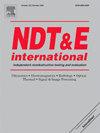引入GenAI合成训练数据,改进GDXRay铸件数据集缺陷自动识别
IF 4.1
2区 材料科学
Q1 MATERIALS SCIENCE, CHARACTERIZATION & TESTING
引用次数: 0
摘要
x射线是一种无损检测(NDT)技术,通常用于航空航天、汽车或核工业,当需要保证某些部件的结构完整性时。随着数字放射照相(DR) x光机的引入,工业数据集现已可用,并且是基于神经网络(NN)对象检测模型的自动缺陷识别(ADR)系统的基础。然而,建立一个足够大的数据集并不容易,并且在生产环境中需要很长时间,从而延迟了ADR模型的引入。一个潜在的解决方案是使用生成人工智能(GenAI)来合成新的图像。然而,由于x射线图像的微妙性质,这些模型无法生成完全真实的图像。因此,本文提出了一种新的可扩展条件Wasserstein GAN (SCWGAN)模型生成的完美图像和合成缺陷的组合。这种合成缺陷通过一种定位算法引入到目标图像中,该算法使用掩模图像定义允许的缺陷区域、期望的高斯或泊松噪声水平以及缺陷的大小和纵横比。通过创建这样的合成数据集并将其与原始GDXRay数据集相结合,我们提出的检测系统在mAP@IoU=0.5:0.95(我们的目标指标,以减少缺陷定位的不确定性)方面实现了17%的改进。作为次要指标,为了与其他研究进行比较,该模型也达到96.0% mAP@IoU=0.50,这超过了评估数据集的当前文献所能提供的最大精度。本文章由计算机程序翻译,如有差异,请以英文原文为准。
Improving automatic defect recognition on GDXRay castings dataset by introducing GenAI synthetic training data
X-rays are a Non Destructive Testing (NDT) technique commonly employed by aerospace, automotive or nuclear industries when the structural integrity of some parts needs to be guaranteed. Industrial dataset are now available with the introduction of Digital Radiography (DR) X-ray machine and are the basis for Automated Defect Recognition (ADR) systems based on Neural Network (NN) object detection models. However, building a big enough dataset is not easy and takes a long time in a production environment, delaying the introduction of ADR models. A potential solution is to use Generative Artificial Intelligence (GenAI) to synthesise new images. However, these models fail to generate full realistic images due to the subtle nature of X-ray images. Hence, this paper propose a combination of flawless images and synthetic defects generated by a novel Scalable Conditional Wasserstein GAN (SCWGAN) model. Such synthetic defects are introduced in the target images by a location algorithm that uses a mask image defining the allowable defective areas, the expected Gaussian or Poisson noise level and the defect size and aspect ratio. By creating such synthetic dataset and combine it with the original GDXRay dataset, our proposed detection system achieves an improvement of 17 % in mAP@IoU=0.5:0.95 (our target metric to reduced uncertainty on defect location) with regards the baseline model trained with only real images. As a secondary metric, to allow comparison with other studies, the model also achieves 96.0 % mAP@IoU=0.50, which exceeds the maximum accuracy available on current literature for the evaluated dataset.
求助全文
通过发布文献求助,成功后即可免费获取论文全文。
去求助
来源期刊

Ndt & E International
工程技术-材料科学:表征与测试
CiteScore
7.20
自引率
9.50%
发文量
121
审稿时长
55 days
期刊介绍:
NDT&E international publishes peer-reviewed results of original research and development in all categories of the fields of nondestructive testing and evaluation including ultrasonics, electromagnetics, radiography, optical and thermal methods. In addition to traditional NDE topics, the emerging technology area of inspection of civil structures and materials is also emphasized. The journal publishes original papers on research and development of new inspection techniques and methods, as well as on novel and innovative applications of established methods. Papers on NDE sensors and their applications both for inspection and process control, as well as papers describing novel NDE systems for structural health monitoring and their performance in industrial settings are also considered. Other regular features include international news, new equipment and a calendar of forthcoming worldwide meetings. This journal is listed in Current Contents.
 求助内容:
求助内容: 应助结果提醒方式:
应助结果提醒方式:


